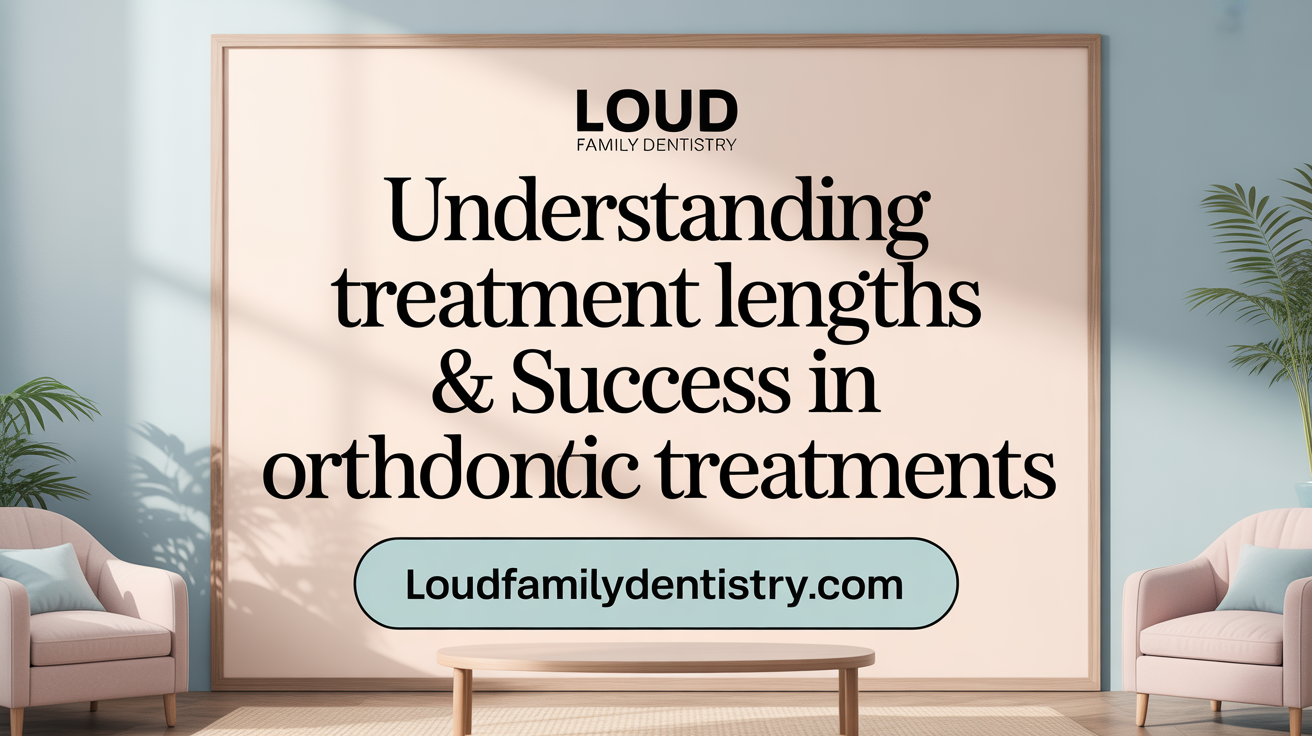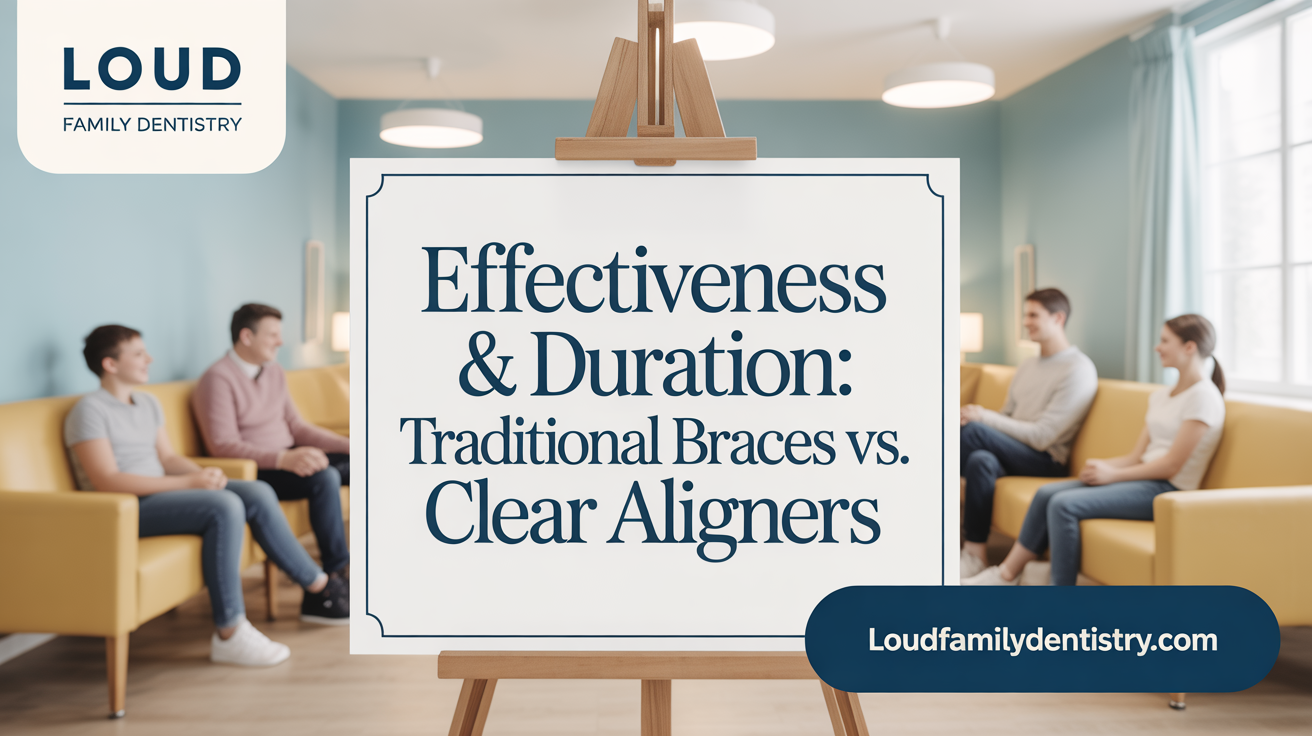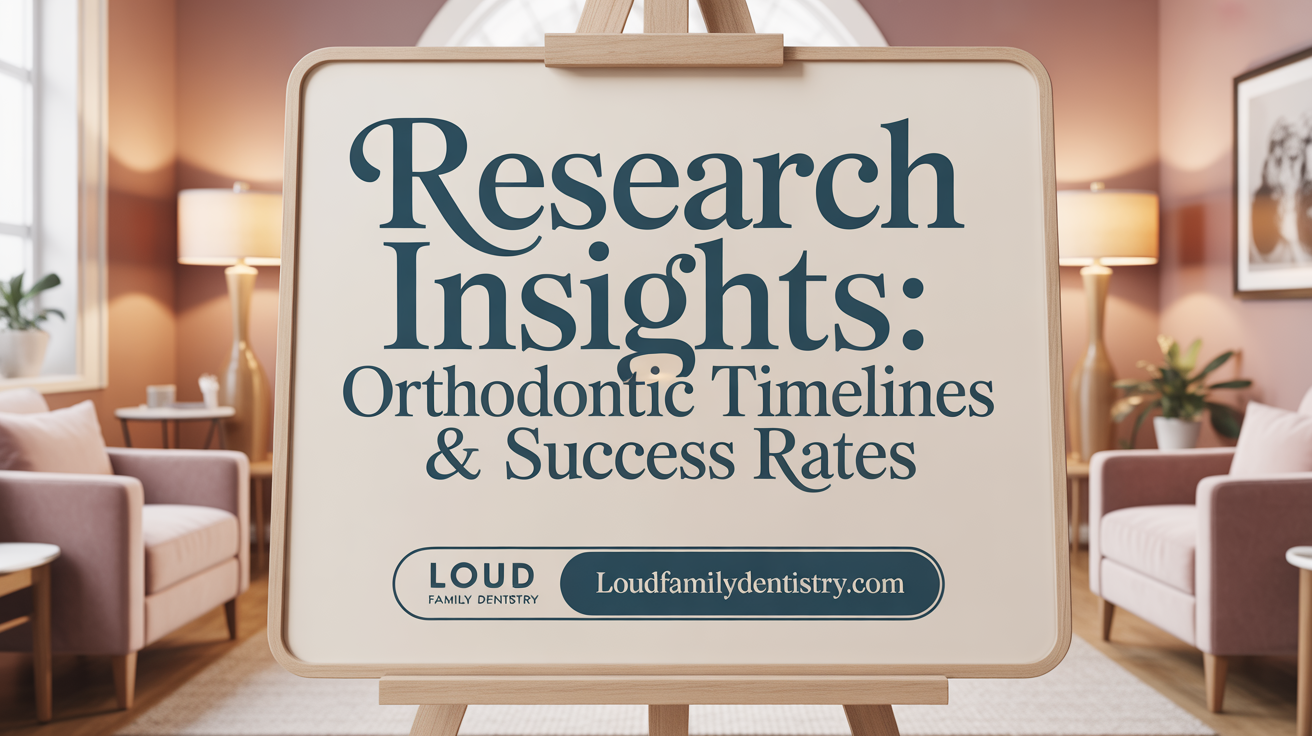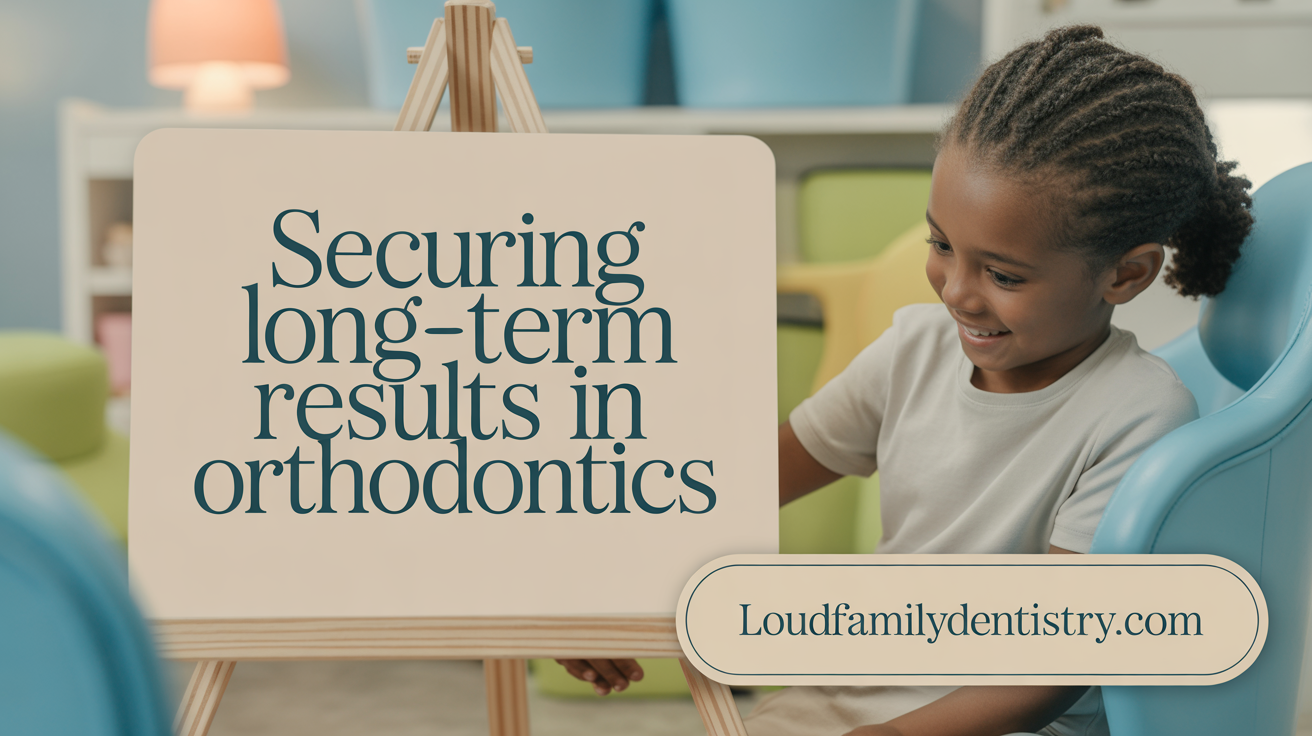Understanding Orthodontic Treatment Durations and Success Rates
Orthodontic treatment with braces and clear aligners has transformed dental care by offering varying approaches to achieve tooth alignment and occlusal stability. Patients and practitioners alike seek data-driven insights into treatment duration, alignment success, and long-term outcomes to make informed decisions. This article dissects recent evidence comparing traditional braces and clear aligners, focusing on how long treatments typically last and how effectively they correct malocclusions for diverse patient needs.
Orthodontic Treatment Duration and Success Key Facts
- Typical treatment duration ranges from 6 to 30 months, depending on case complexity.
- Most standard cases involve treatment durations of 18 to 24 months, with simpler cases taking 6 to 12 months.
- Severe cases, including jaw discrepancies, may extend treatment to over two years, sometimes up to 30 months.
- Success rates of traditional braces in achieving correct occlusion are approximately 88% to 90%.
- Younger patients tend to have faster and more predictable results than adults.
- Retainers, especially fixed retainers, are vital for long-term stability and relapse prevention.
- Patients report moderate discomfort after adjustments, which usually subsides within days.
- Case complexity directly affects treatment duration, with mild cases taking 6-12 months and severe cases exceeding 24 months.
- Treatment success hinges on factors like patient compliance, oral hygiene, and case complexity.
- Proper case selection and advanced technology can reduce overall treatment duration without compromising results.
1. Treatment Duration and Success of Traditional Braces in Orthodontics

What is the typical duration for orthodontic treatment with braces?
The length of orthodontic treatment with traditional braces varies based on individual cases and the complexity of dental issues. Generally, treatment spans from about 6 to 30 months.
For most standard cases involving mild to moderate malocclusion, the treatment duration typically falls within 18 to 24 months. Simple cases like minor crowding or spacing often require closer to 6 to 12 months, especially in younger patients who have ongoing dental development.
Severe orthodontic problems, such as extensive crowding, significant bite discrepancies, or jaw alignment issues, may extend treatment to over two years. In some complex scenarios, especially with adult patients, the process can last up to 30 months.
Patients’ age plays a role too. Children and teenagers usually respond faster to treatment, with durations averaged around 18 to 24 months. Adults may need longer, often towards the higher end of the range, primarily due to denser bone structures and less adaptability.
It’s important to note that treatment duration is also influenced by patient compliance, oral hygiene, and the specific type of braces used. More advanced technologies and techniques aim to reduce overall treatment time without compromising results.
Success rates in alignment and correction of malocclusions using braces
Traditional braces have demonstrated high success rates in correcting a variety of dental issues. Improvements in dental alignment, bite correction, and occlusal stability are typically substantial.
Research indicates success rates of approximately 88% to 90% in effectively achieving desired occlusion. The Objective Grading System (OGS) is often used to evaluate the outcome, showing overall positive results across various cases.
However, the stability of these results depends heavily on proper retention strategies post-treatment. Fixed retainers tend to offer superior long-term stability compared to removable options.
Impact of case complexity on treatment duration
The complexity of the initial malocclusion directly impacts how long treatment takes.
| Case Complexity | Expected Duration | Additional Notes |
|---|---|---|
| Mild (e.g., minor crowding/spaces) | 6-12 months | Usually straightforward, high predictability |
| Moderate (e.g., moderate crowding or bite issues) | 14-18 months | May require auxiliary devices or team adjustments |
| Severe (e.g., significant crowding, skeletal discrepancies) | 18-24 months / more | Often involves complex movements, possibly jaw surgery |
Complex cases may need auxiliary tools such as elastics, TADs (Temporary Anchorage Devices), or bite ramps to assist movement. These can extend or shorten cases based on individual treatment protocols.
Patient age and its relation to treatment outcomes
Younger patients tend to experience faster and more predictable results, as their bone structures are more adaptable. Teenagers and children typically complete treatment within the lower range of durations.
Adults, in contrast, usually require more time due to less flexible bones and additional dental considerations like restorations or missing teeth. Their treatment often extends to the higher end of the timeline.
Role of retention and long-term stability
Achieving straight teeth is one part; maintaining results long term is another. Retainers are essential after active orthodontic treatment.
Research shows fixed retainers are more effective in maintaining long-term alignment, reducing relapse rates. Regular follow-ups and patient compliance significantly influence longevity.
Reported patient satisfaction and discomfort levels
Patients generally report high satisfaction levels with braces, especially with well-managed treatment processes. Discomfort during adjustments is common but usually subsides within days.
In a recent study, patients with traditional braces reported moderate discomfort, particularly after wire changes. The introduction of new bracket designs and careful monitoring have helped reduce this discomfort.
Overall, proper case selection, precise planning, and patient cooperation are crucial to optimize outcomes, minimize treatment duration, and ensure stability and satisfaction.
| Aspect | Typical Range | Additional Factors |
|---|---|---|
| Treatment duration | 6-30 months | Case complexity, age, compliance |
| Success rate | 88-90% | Treatment planning, retention |
| Discomfort | Moderate after adjustments | Technology used, patient tolerance |
| Long-term stability | Improved with fixed retainers | Retainer type, follow-up frequency |
2. Comparing Clear Aligners and Traditional Braces: Treatment Duration and Effectiveness

How does the effectiveness of traditional braces compare to clear aligner therapy like Invisalign?
The effectiveness of traditional braces versus clear aligner therapy like Invisalign depends largely on the complexity of the malocclusion and individual patient needs. Traditional braces, which involve brackets and archwires bonded directly to teeth, are highly versatile and better suited for complex tooth movements, including significant rotations, vertical corrections, and substantial arch expansion.
In contrast, Invisalign and other clear aligners are displacement-driven systems primarily effective for milder cases. They excel in movements such as tipping, minor rotations, and mild spacing or crowding corrections. Studies show Invisalign can achieve approximately 88-90% success in malocclusion correction, with a treatment duration around 18 months on average.
For complex cases involving severe crowding, skeletal discrepancies, or open bites, traditional braces typically deliver more predictable and stable results. They enable the orthodontist to exert greater control over tooth torque, occlusion, and vertical movements, often making them the preferred choice for comprehensive orthodontic correction.
In summary, while Invisalign offers advantages in comfort, aesthetics, and shorter treatment times for suitable cases, traditional braces remain more effective for complex malocclusion corrections requiring detailed control of tooth movement.
Scientific Evidence on Orthodontic Treatment Timelines and Success Rates

What scientific research evidence exists regarding orthodontic treatment timelines and success rates?
The current body of scientific research presents a nuanced picture of how effective various orthodontic treatments are and how long they typically take. Systematic reviews and clinical studies broadly agree that treatment outcomes depend on multiple factors including the type of appliance used, the severity of malocclusion, and patient compliance.
For clear aligners like Invisalign, evidence indicates they are particularly effective for mild to moderate malocclusions. These aligners are known for achieving predictable tooth movements such as leveling, tipping, derotation, and minor space closures. Studies show that in non-growing adult patients, aligners can produce comparable results to traditional braces in these simpler movements. However, their effectiveness diminishes when it comes to more complex motions like arch expansion, significant rotation, or space closure involving extraction sites.
The scientific evidence supporting traditional fixed appliances (braces) suggests they tend to offer greater precision, especially for complex cases requiring detailed control over tooth positioning. Braces allow for targeted adjustments and can manage difficult movements more reliably.
Limitations within the current research include variability across studies—such as differences in study design, patient populations, and assessment criteria—which contribute to heterogeneity. Additionally, many studies carry biases, and the predictability of certain movements with aligners remains variable.
Although progress has been made, there is a recognized need for higher-quality randomized controlled trials that directly compare different treatments over standardized periods. Such research would help clarify optimal treatment durations and success benchmarks forboth aligners and braces.
In summary, while the scientific evidence supports the effectiveness of both modalities for certain cases, it highlights the importance of case selection and the need for further rigorous research to establish clear, evidence-based timelines and success rates across all orthodontic treatment options.
Factors Affecting Stability and Long-Term Outcomes of Orthodontic Treatment

What factors influence the stability and long-term outcomes of orthodontic treatments?
The stability of orthodontic results and their long-term success depend on several interconnected factors. A primary factor is the achievement of precise and high-quality treatment outcomes. When the final positioning of teeth is accurately achieved, it significantly enhances the chances of maintaining those results over time.
Utilizing appropriate retention methods also plays a crucial role. Fixed retainers, especially in the lower arch, have demonstrated superior effectiveness in maintaining teeth alignment and reducing relapse. These fixed devices help prevent the natural tendency of teeth to shift back, ensuring sustained stability.
Another important aspect is the initial condition of the teeth post-treatment. Low residual irregularity—quantified using measures like Little’s Irregularity Index—correlates positively with stability, as less misalignment at the end of treatment means fewer tendencies for relapse.
However, despite the influence of these factors, long-term stability varies considerably between cases. Some patients experience relapse despite optimal treatment, primarily due to factors like residual crowding, malocclusion severity, or inherent dental and skeletal discrepancies.
Patient compliance with retention protocols and oral hygiene practices also significantly impacts outcomes. Non-compliance with retainers or improper care can lead to increased relapse risk.
In conclusion, ensuring effective treatment planning, achieving precise alignment, implementing suitable retention strategies, and encouraging patient adherence are essential for improving long-term stability of orthodontic treatment.
Summarizing Orthodontic Treatment Efficiency and Success
Orthodontic braces and clear aligners both play pivotal roles in achieving successful teeth alignment and correcting malocclusions, with each offering particular advantages based on case complexity and patient preferences. Traditional braces remain highly effective for severe and complex cases, generally requiring longer treatment durations but offering robust control and promising long-term stability. Clear aligners provide shorter, comfortable treatment options suited for mild to moderate conditions with high patient satisfaction though sometimes with slightly higher relapse tendencies. Ultimately, treatment planning must weigh patient-specific factors, including compliance, case severity, and retention strategy, to optimize outcomes and stability over time. As ongoing research refines our understanding, these insights empower informed decision-making for orthodontic care.
References
- Stability and Success of Clear Aligners in Orthodontics: A Narrative ...
- A Comparative Study on the Efficiency of Clear Aligners... - LWW
- Comparative Analysis of Braces and Aligners: Long-Term ...
- A comparison of treatment effectiveness between clear aligner and ...
- Traditional Braces Treatment Timeline: From Consultation to ...
- How Long Will My Orthodontic Treatment Take with Braces or Clear ...
- Long-term Outcomes of Traditional Braces versus Invisalign... - LWW
- Evaluating the Effectiveness of Different Retention Protocols in ...
- How Stable Is Orthodontic Treatment When Excellent Outcomes Are ...
- Long-term stability of orthodontic treatment and patient satisfaction ...
